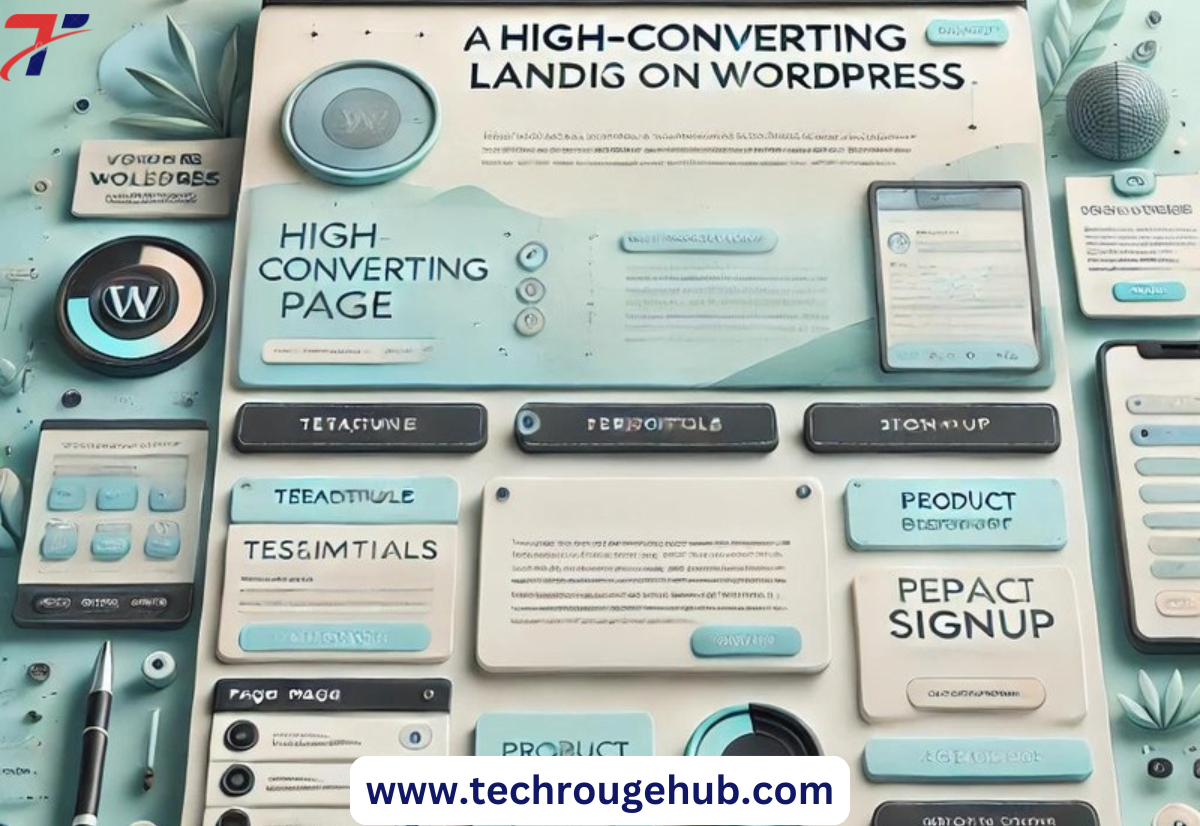A well-designed landing page is essential for converting website visitors into leads, customers, or subscribers. If you’re using WordPress, you’re in luck—this powerful platform offers numerous tools and plugins to create high-converting landing pages with ease. In this blog, we’ll guide you through the steps of building a landing page that grabs attention and drives action.
1. Define Your Goal
Before you start designing, the first step is to define the primary goal of your landing page. Are you trying to capture email leads? Sell a product? Promote a service? Having a clear objective will guide every design decision you make. Your entire landing page should be focused on encouraging visitors to take one specific action, such as clicking a button or filling out a form.
2. Choose the Right WordPress Theme or Page Builder

WordPress offers plenty of themes and page builders that are perfect for creating landing pages. Some popular page builders include:
- Elementor
- Divi
- Beaver Builder
These tools allow you to build landing pages visually, using drag-and-drop elements, without needing to code. Many of them offer pre-built landing page templates, making the process faster and easier. Choose a theme or builder that is fast, responsive, and easy to customize.
3. Create a Clean and Eye-Catching Design
Simplicity is key when designing a landing page. A clean layout with a strong visual hierarchy will keep visitors focused on your message and call-to-action (CTA). Use plenty of white space, bold headlines, and minimal distractions to guide users toward your CTA.
Consider these design tips:
- Use contrasting colors for your CTA button to make it stand out.
- Limit text to only what’s necessary to explain your offer or value proposition.
- High-quality visuals (like product images or videos) can boost engagement.
4. Craft a Compelling Headline
The headline is the first thing visitors see, so make it count. It should clearly communicate the benefit of your offer or the value proposition. A strong headline grabs attention and compels visitors to keep reading.
Here’s an example of an effective headline:
“Boost Your Sales by 50% with Our Proven Marketing Strategy!”
5. Write Persuasive Copy
The text on your landing page should be concise and persuasive. Focus on the benefits rather than just the features of your product or service. Answer the visitor’s question: What’s in it for me?
Break down your offer into digestible bullet points and use language that resonates with your target audience. Keep the tone conversational, and avoid industry jargon or overly technical terms.
6. Include a Strong Call-to-Action (CTA)

Your CTA is the most important element of your landing page. Whether it’s a button, a form, or a link, it should clearly tell visitors what to do next. Use action-oriented language that encourages clicks, such as:
- Get Started Now
- Download the Free Guide
- Claim Your Discount
Make sure your CTA stands out visually by using a contrasting color, large fonts, or even an arrow pointing toward it. Place your CTA strategically—at least once above the fold and again toward the bottom of the page.
7. Use Social Proof
Adding social proof can significantly increase conversions. People are more likely to trust your offer if they see that others have already benefited from it. Include testimonials, reviews, case studies, or logos of companies you’ve worked with to build trust.
For example, if you’re offering a course, you could include a testimonial that reads: “This course helped me grow my business by 30% in just three months!”
8. Optimize for Mobile Devices
With more users browsing the web on mobile devices, ensuring that your landing page is fully responsive is essential. A mobile-friendly design provides an optimal viewing experience and ensures that your CTA is easily clickable on any device.
Most WordPress themes and page builders are responsive by default, but always test your landing page on mobile devices to ensure everything works perfectly, including images, forms, and buttons.
9. Speed Up Your Landing Page
Page speed plays a significant role in conversion rates. A slow-loading landing page can cause visitors to leave before even seeing your offer. Optimize your landing page for speed by:
- Compressing images
- Using caching plugins like W3 Total Cache or WP Super Cache
- Minimizing the use of heavy scripts or unnecessary elements
Tools like Google PageSpeed Insights can help you test and improve the speed of your landing page.
10. Track Performance with Analytics
Once your landing page is live, it’s important to track its performance using tools like Google Analytics or Hotjar. These tools can show you how visitors are interacting with your page, which elements are working, and which need improvement.
You can track key metrics such as:
- Conversion rate: The percentage of visitors who take the desired action.
- Bounce rate: The percentage of visitors who leave the page without interacting with it.
- Scroll depth: How far down the page users scroll, which indicates engagement.
By analyzing this data, you can make informed decisions about A/B testing different elements of your landing page to boost conversions.
Conclusion
Creating a high-converting landing page on WordPress doesn’t have to be difficult. By following these steps—defining your goal, choosing the right tools, designing with simplicity, crafting compelling copy, and optimizing for speed and mobile—you can create a landing page that attracts, engages, and converts visitors.
Need help building your landing page? At TechRougeHub, we specialize in creating high-converting websites and landing pages that deliver results. Contact us today to get started!

